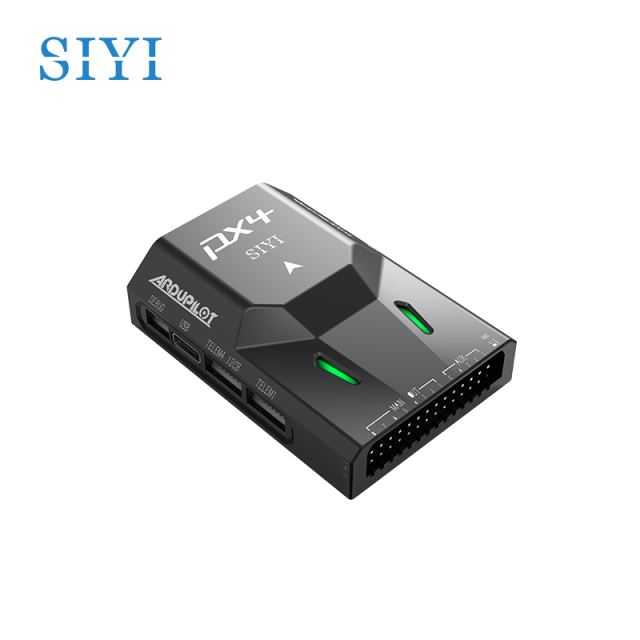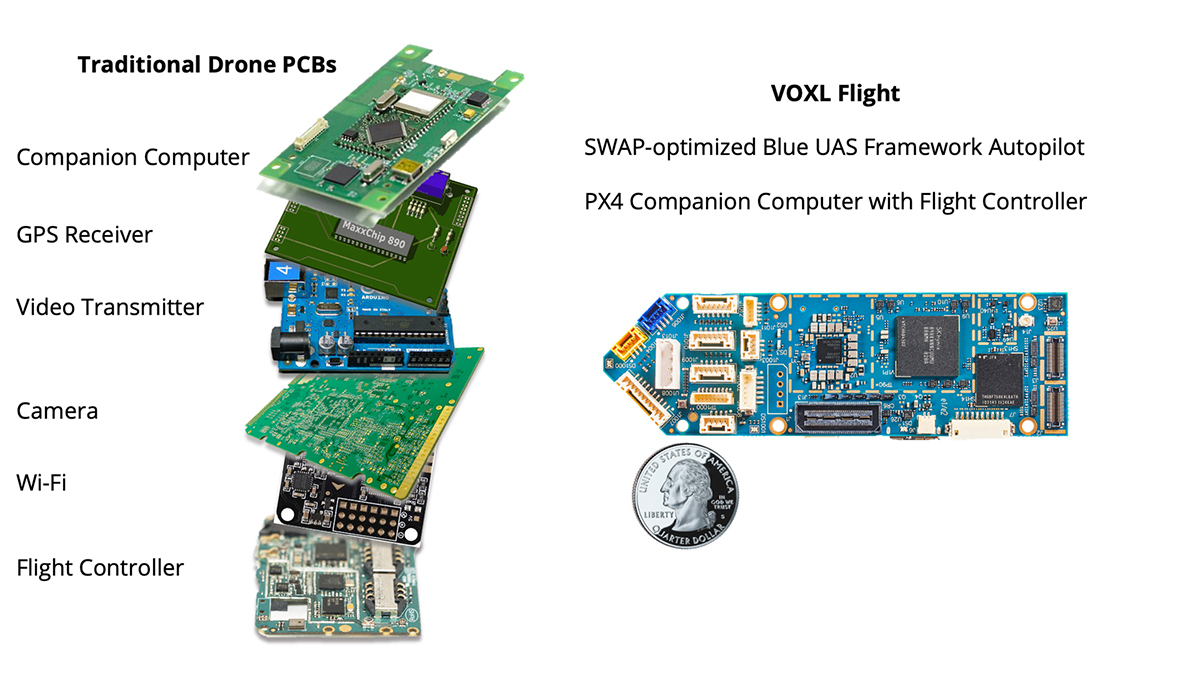SparkNavi Drone Flight Controller and GNSS/INS Made in Taiwan: Precision Navigation for Drones
SparkNavi Drone Flight Controller and GNSS/INS Made in Taiwan: Precision Navigation for Drones
Blog Article
Recognizing the Essential Functions and Features of a Drone Flight Controller for Optimum Aerial Efficiency
The flight controller functions as the essential component in a drone's style, coordinating its movements and guaranteeing security through an advanced interaction of sensors and data processing. Recognizing the important functions and features of these controllers is important for taking full advantage of aerial efficiency, as they determine not only navigational precision however also total security and reliability. With developments in modern technology, the landscape of flight controllers is quickly evolving, motivating a more detailed exam of what absolutely specifies optimum capability in this crucial system. What implications do these advancements hold for both enthusiasts and specialists in the area?
Introduction of Trip Controllers
When checking out the world of drone technology, comprehending trip controllers is necessary for both hobbyists and professionals alike. Trip controllers offer as the brain of the drone, orchestrating its activities and guaranteeing security during trip (SparkNavi drone flight controller and GNSS/INS made in taiwan). They refine information from different sensing units, consisting of barometers, gyroscopes, and accelerometers, to keep stability and respond to pilot inputs properly
The architecture of flight controllers can differ substantially, ranging from basic variations developed for entry-level drones to sophisticated systems outfitted with advanced functions for professional applications. The combination of GPS capacities enables specific navigation and positioning, while programmable firmware permits individuals to customize flight qualities to match their particular needs.
Furthermore, trip controllers are critical in facilitating interaction between the drone and the remote control, allowing real-time modifications and telemetry information transmission. Comprehending the various kinds of trip controllers, consisting of multi-rotor, fixed-wing, and crossbreed systems, is important for selecting the suitable version for an offered application. Eventually, a detailed understanding of flight controllers not just boosts the flying experience however likewise maximizes the efficiency and safety and security of drone procedures.
Trick Features of Trip Controllers
Flight controllers play a crucial duty in managing a drone's trip characteristics by executing a number of vital functions that ensure stability and responsiveness. Among the key functions is the stablizing of the drone's positioning and altitude. This is achieved via the assimilation of different sensors, including gyroscopes, barometers, and accelerometers, which continually keep track of the drone's position and movement.
.png)
One more important function is the processing of control inputs from the pilot or independent systems. The trip controller translates these inputs and changes the drone's electric motor rates accordingly to attain the preferred trip course. This consists of handling roll, yaw, and pitch, which are essential for ability to move.
Furthermore, flight controllers are geared up with foolproof systems. These functions are developed to reply to vital situations, such as reduced battery levels or loss of signal, by starting predefined actions like going back to the launch factor or floating in place.

Vital Functions to Take Into Consideration
When choosing a drone trip controller to make sure ideal efficiency and integrity,Numerous crucial attributes ought to be taken into account. One essential facet is the controller's handling power, which determines its capability to manage intricate flight formulas and real-time data handling. A greater handling ability improves responsiveness and stability throughout flight.
An additional vital attribute is the variety of supported flight modes. A flexible trip controller ought to use various modes, including acro, elevation hold, and GPS-assisted settings, catering to various pilot ability degrees and operational scenarios. In addition, the visibility of built-in security features, such as fail-safes and geofencing, can significantly improve functional safety and security.
Compatibility with various communication procedures is also essential, as it makes certain smooth assimilation with various other tools and peripherals, such as remote controllers and telemetry systems. The controller's firmware have to be user-friendly and routinely upgraded to integrate new features and optimizations.
Assimilation With Sensors and Equipments
A trip controller's performance is greatly affected by its capacity to integrate with different Continued sensors and systems. This combination is essential as it makes it possible for the flight controller to get real-time data essential for effective flight monitoring. Key sensing units include GPS, inertial measurement devices (IMUs), barometers, and magnetometers, each offering vital details relating to the drone's altitude, positioning, and position.

Furthermore, advanced flight controllers support combination with payload systems, including cameras and other sensors, enabling enhanced capabilities such as self-governing navigation and challenge evasion. This interconnectedness not just boosts the drone's operational capabilities but additionally increases its application possible throughout different sectors, from aerial photography to agricultural monitoring. Thus, a well-integrated flight controller is basic for accomplishing ideal aerial efficiency and ensuring the dependability of drone operations.
Tips for Optimizing Efficiency
To take full advantage of the efficiency of your drone, several key approaches can be employed that emphasis on maximizing both equipment and software program elements. Make certain that the flight controller firmware is up to date.
Following, adjust your sensors, consisting of the accelerometer and gyroscope, to make sure precise analyses. Correct calibration reduces drift and enhances trip security, especially during facility maneuvers. Furthermore, think about updating the hardware components, such as propellers and electric motors, to enhance drive and efficiency. High-grade propellers can reduce drag and boost flight time.
Moreover, optimize your drone's weight by minimizing unnecessary hauls. A lighter drone not only executes much better however additionally extends battery life. Ultimately, fine-tune your flight settings, consisting of PID (Symmetrical, Essential, Acquired) worths, to accomplish receptive and smooth handling. By carrying out these techniques, drone drivers can dramatically improve aerial performance, resulting in a much more reliable and enjoyable flying experience.
Conclusion
Finally, a thorough understanding of drone trip controllers is important for enhancing aerial performance. The assimilation of important attributes and essential functions, including handling power and security systems, straight influences the stability and ability to move of drones. Moreover, reliable communication with numerous sensors and systems plays a crucial function in attaining accurate navigation and operational effectiveness. By focusing on these aspects, operators can dramatically elevate the performance and dependability of their drone systems in diverse applications.
Flight controllers serve as the brain of the drone, managing its activities and guaranteeing stability during flight.Flight controllers play his explanation a crucial duty in handling a drone's trip dynamics by performing several crucial functions that make sure security and responsiveness. The trip controller analyzes these inputs and changes the drone's electric motor speeds appropriately to attain the desired flight course.Many necessary attributes should be taken into account when selecting a drone flight controller to guarantee optimal efficiency and reliability. Thus, a well-integrated trip controller is essential for accomplishing optimal aerial performance and guaranteeing the integrity of drone procedures.
Report this page